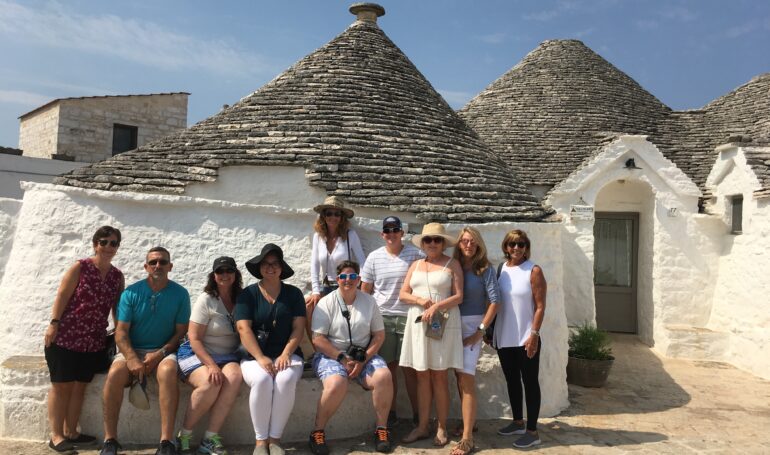
Visiting Puglia: The Southern Charm
Is visiting Puglia on your radar? The beauty of its architecture, the richness of its cuisine, and the possibility of reaching the most beautiful beaches and towns the south has to offer is what attract thousands of tourists to visit Puglia every year. Making it a lively and stimulating region to visit at any time.
This wasn’t always the case. Puglia, like my own birth region of Calabria, was at one point an undiscovered region, known mostly to Italians only, who visited every summer for the stunning azure beaches. Thanks in part of governmental funds provided to each municipality to increase tourism, Puglia is now becoming a very popular destination. Even for folks outside of Italy. Many have named Puglia the “Tuscany of the South.” And if that is the case, than Lecce is certainly the Florence of the south.
Read below to learn more about this wonderful region, its charm, and why so many more people are becoming fascinated with the allure of this southern region.
LECCE
Located in the southern portion of the region, Lecce is one of Puglia’s largest and most important cities. Lecce is very walkable and has a beautiful historic center. This is ideal because if it’s one thing Lecce is known for, it is its Baroque architecture, which adorns its famous buildings and churches. You can see the buildings’ outer beauty throughout the city, and it’s typical for them to have decorations of angels, cherubs, and gargoyles. Filled with churches, 22 of them to be exact; it would be hard to walk in Lecce and not find a church along your path. But, whether religious or not, it’s almost beside the point as you are sure to admire the Baroque art. Be sure to visit the Piazza Duomo, where you will find the most ornately decorated Baroque buildings.
To enter the historic center of Lecce, you must go through one of the gates. Originally there were four, but one, Porta San Martino, was destroyed to the ground, and now only three remain—Porta Napoli, built in the Corinthian style in 1548. In addition, Porta San Biagio, built on a pre-existing tower during the eighteenth century and dominated by the statue of the saint whose name it bears—and Porta Rudiae, whose name derives from the ancient city of Messapic origin.
In the historic center of Lecce, there are shops of all kinds, including handicrafts and shops selling handmade items. One material used in Lecce craftsmanship is paper-mâché, used to make religious statues or nativity scenes. Copper, terracotta, and wrought iron are also present and are readily available in the shops in the center.
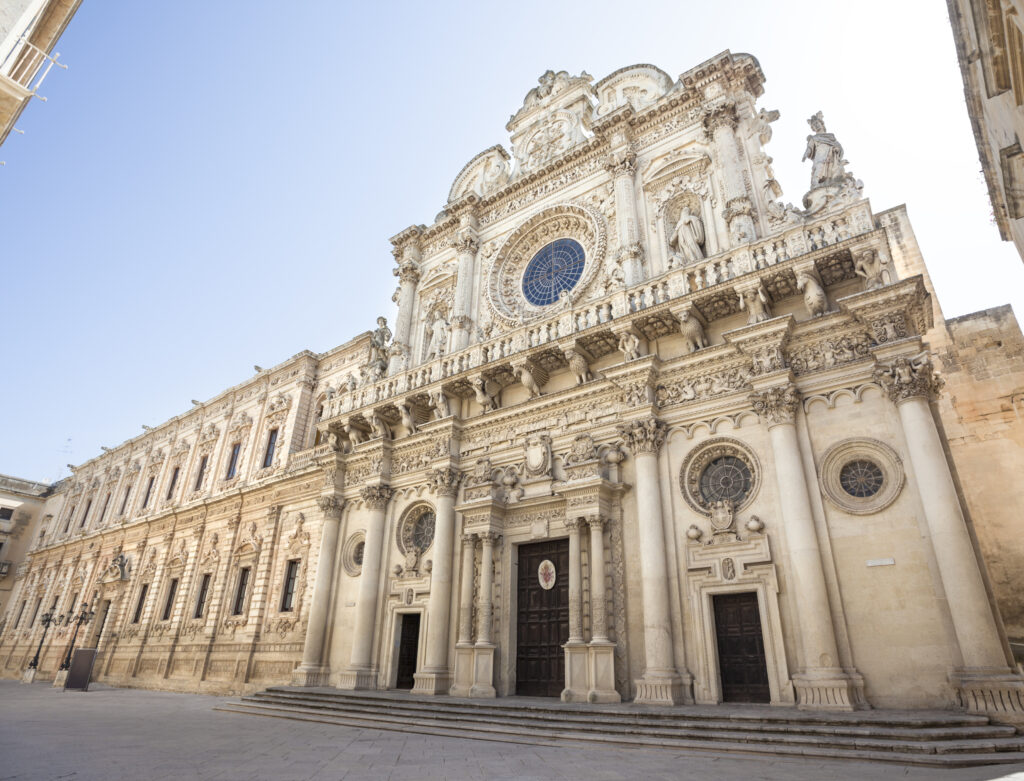
GALLIPOLI
Located on the west coast on the Ionian Sea, the fishing village of Gallipoli means “beautiful city,” and it certainly lives up to its name. Divided into two sections, the old and the new, a bridge brings them together. Fish is king in Gallipoli, so chances are, you will find it on any menu in any restaurant while visiting. It’s no surprise that beach going is one of Gallipoli’s favorite pastimes, where the water is clear and the sand fine.
Gallipoli is known for being and ancient city and “the pearl of Salento.” This is evident in its historic center. Here, it is still possible to admire the vast historical and architectural heritage of Gallipoli walking through the streets of the old city. The presence of numerous churches, ancient palaces, and various buildings in the Baroque style characterizes the city’s historic center. The city is also home to numerous religious buildings, the most important of which is the Basilica of St. Agata, a 17th-century church located at the island’s highest point. Like many other churches in this region, the Basilica of St. Agata is in Baroque style. The interior has three aisles and houses Baroque altars and various valuable paintings.
Also not to be missed is a visit to the beautiful Chiesa della Purità, which was built in the mid-17th century. The interior is rich in stucco and houses a marble high altar and numerous paintings dating back to the eighteenth century.
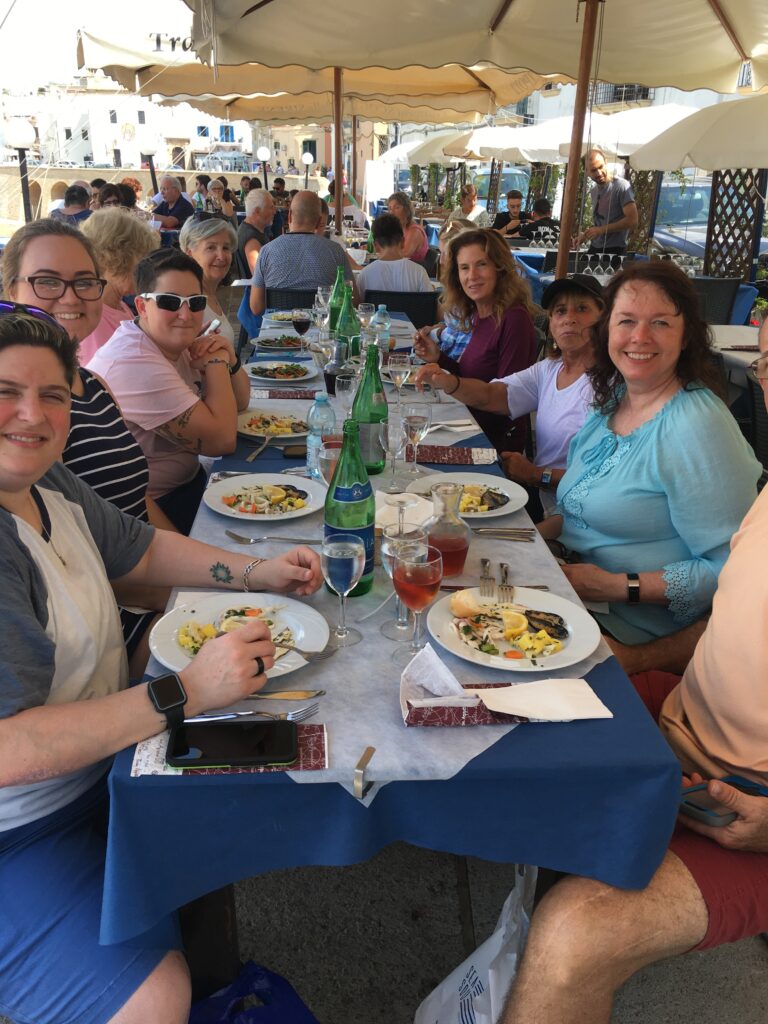
GALATINA
Galatina is located less than twenty minutes by car from Lecce, and is a city that is also worth visiting. The streets of this village are full of history and tradition, but also of magic. In fact it is precisely here that the Salento taranta dance was born.
One of the most famous churches of Salento is located right here, the Church of San Paolo. Better known as the Tarantate Chapel, it was here that, from the Middle Ages to as recent as the 1950s, it is believed that the local “misbehaving” women were cured from the bites of the poisonous tarantula. The Church of San Paolo is one of the symbolic places of Tarantism. The local women drank water from the well adjacent to the church, and prayed to the saint to be freed from the poison. During the ritual, a musical exorcism was performed during which the women danced to the frenetic rhythm of the tambourines, and this “cured” them.
One more stop should be to Basilica of Santa Caterina d’Alessandria. The Basilica of Santa Caterina is one of the major Italian monuments of Romanesque and Gothic art, and it was declared a national monument in 1870. The external façade has a beautiful rose window and three finely sculpted portals. The interior is filled with splendidly frescoed designed by artists from all over Italy, but mainly from Giotto.
In addition to the many churches and historical sites, one must also stop at Pasticceria Ascalone when visiting Galatina. It is said that the pasticciotto, Puglia’s most famous pastry, is the creation of the Asacalone pastry shop. It was dedicated to San Paolo, for having cured the women from the poison of the tarantula.
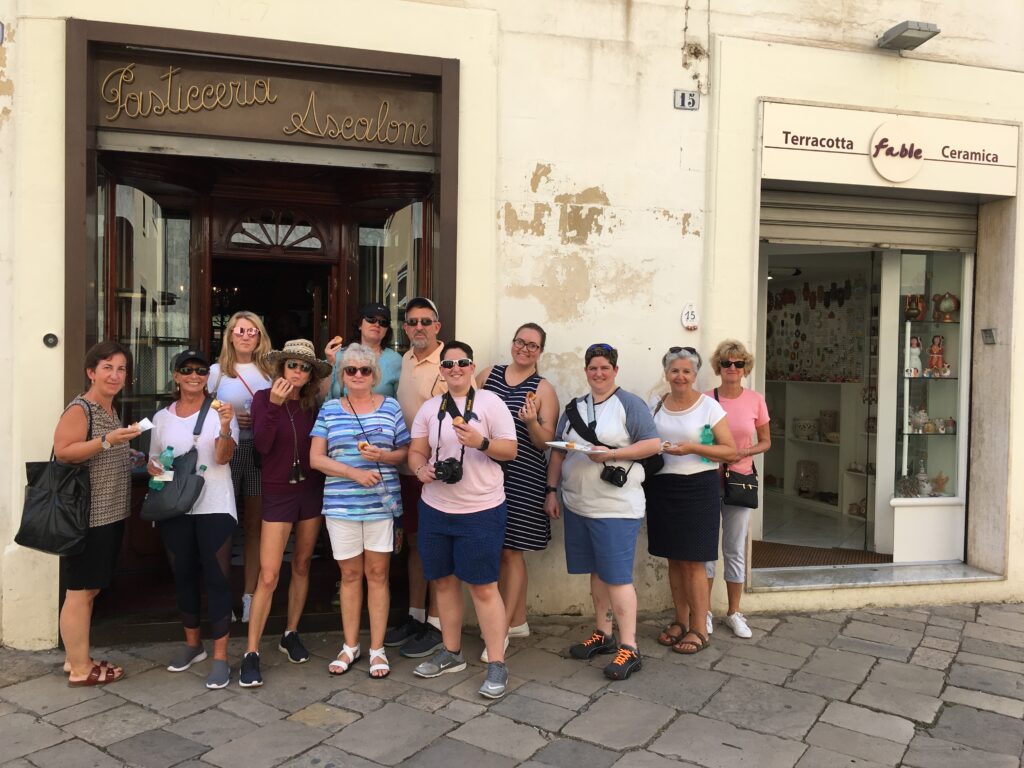
ALBEROBELLO
Alberobello welcomes nearly 2 million visitors every year. The main attraction of Alberobello are the trulli, which surround the characteristic narrow streets of the ancient village. These are typical cone-shaped buildings, in dry stone, characteristic of the Apulian countryside, which date back to the 17th century. The trulli of Alberobello, known throughout the world, are the emblem of the city.
In particular, there are two areas where it is possible to admire most of these buildings: Rione Monti and Aia Piccola. Also not to be missed is a visit to the Trullo Sovrano which has been converted into a museum. More than 1000 trulli are found along narrow streets that wind through Rione Monti, on the hill to the south of the town, and many of these now have been turned into small shops, small boutiques and artisan workshops. Most of these typical buildings are located along eight parallel streets and in particular Via Monte Nero, Via Monte Pasubio, Via Monte S. Michele and Via Monte Sabotino.
Another very characteristic area is Rione Aia Piccola. Here we will find about 400 trulli which are still inhabited today. This district is located in the south-eastern area of Alberobello. Here it is possible to still live and breathe the authentic atmosphere of the ancient village and observe the locals in their daily life. This is a quieter district, there are fewer commercial activities and walking here means admiring how each trullo can present unique characteristics and details.
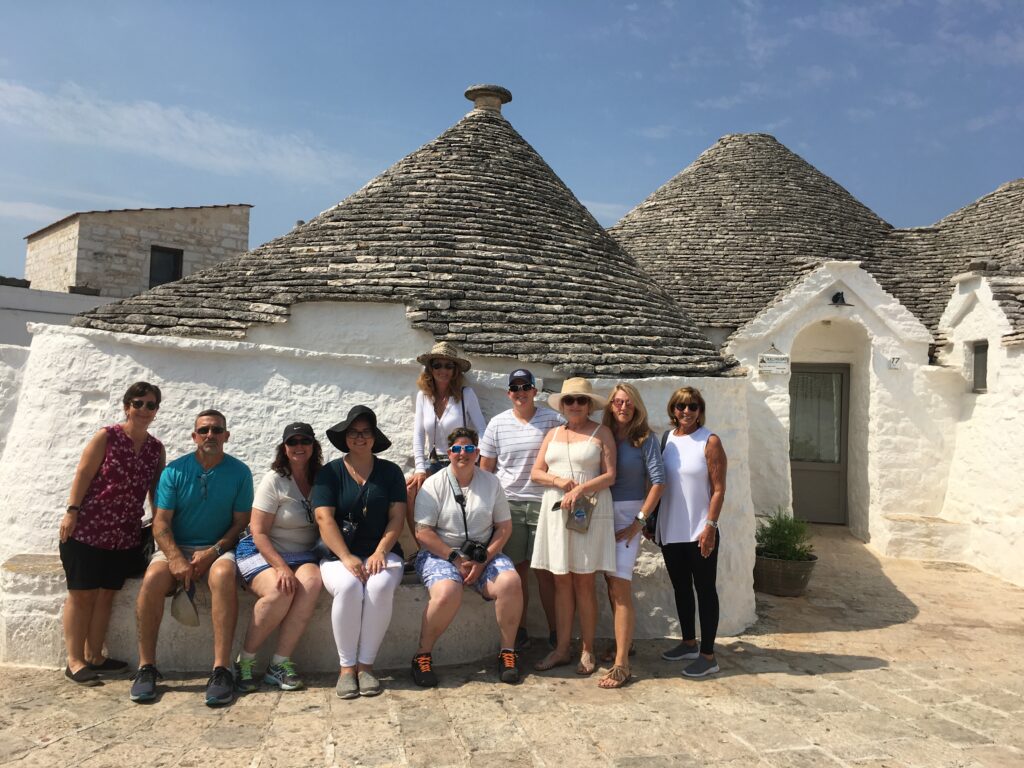
POLIGNANO a MARE
Thanks to a well-kept historical center decorated with flowers, poems written on the walls, excellent hotels, and top-level trattorias, Polignano a Mare boats the award as the most welcoming city in the world for 2023. Booking.com conferred the award. Polignano a Mare, a town of just over 17,000 residents, is located 40 minutes by car from Bari. It is best known for its turquoise sea, and for being the birthplace of Domenico Modugno. The singer is best known for the song “Volare.”
Walking through the historic center you will come across several important churches of Polignano a Mare. First, the Mother Church of Santa Maria Assunta built in 1295. The facade of the church combines the Gothic style with Baroque art. Inside, also not to be missed, is the nativity scene created by Stefano da Putignano. This is a national monument and dates back to 1503.
There is also the Church of Purgatorio. Built in 1768, it is in Baroque style and preserves numerous works of art inside. Among these is a painting by Andrea Miglionico depicting St. Michael among the souls in purgatory.
The “Son of Polignano a Mare”
Today one of the iconic monuments of Polignano a Mare is undoubtedly the imposing statue of Domenico Modugno. The almost ten-foot-tall bronze statue was created by the Argentine sculptor Hermann Mejer in 2009, and represents an ideal embrace of the Italian singer-songwriter to the town where he was born. But the story between Modugno and Polignano is somewhat rocky. Indeed many times, the people of Polignano criticized him for being a traitor who hid his origins.
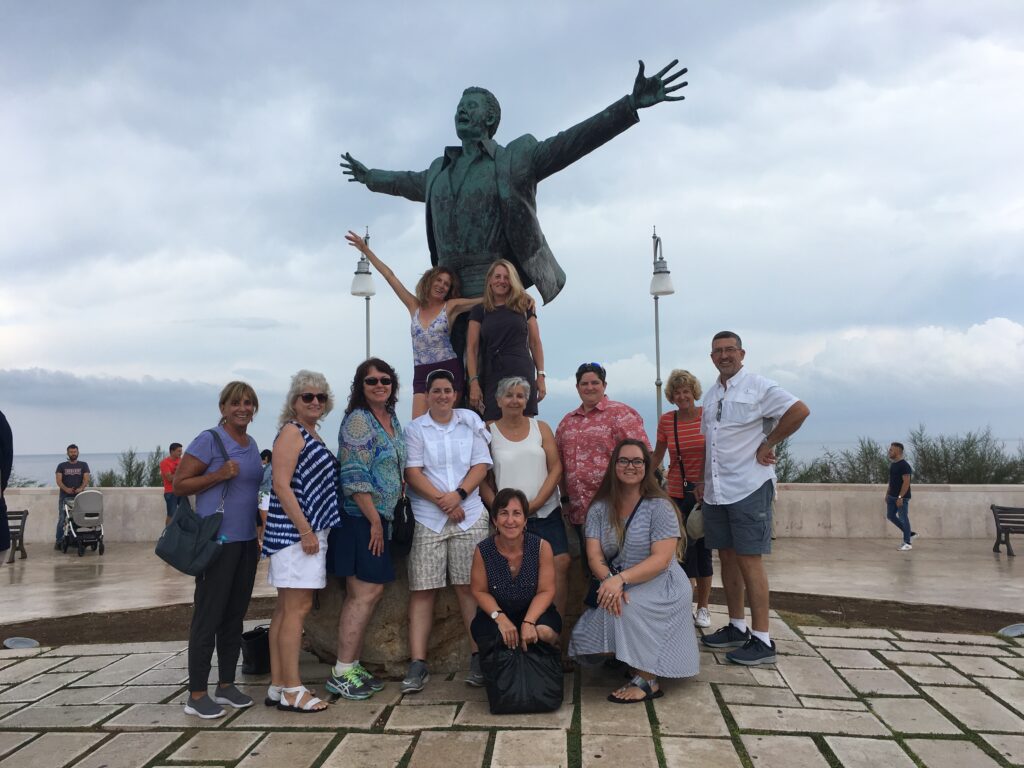
OSTUNI
Located just a few miles from the coast, Ostuni is one of the most spectacular towns in Italy. Sometimes called “The White City,” Ostuni is filled with white stonewashed homes. This makes an ideal backsplash to the countless olive oil trees that line the streets of this picturesque town. Required by the city to maintain their white homes pristine, the government offsets the expense as it pays for half of the cost of the upkeep. Built without any sort of map, Ostuni can be confusing to walk in. At worst, you’ll find a dead-end street that makes little sense and you’ll need to make a U-turn.
Ostuni, is a pearl that you need to discover. After having browsed through its intricate alleys, it also becomes clear that this is one of the most hidden pearls of Puglia. Craft shops, bars, and trattorias hidden here and there welcome tourists, accompanying them towards the hub of city life, Piazza della Libertà, where the monument of Sant’Oronzo, patron saint of the city, stands.
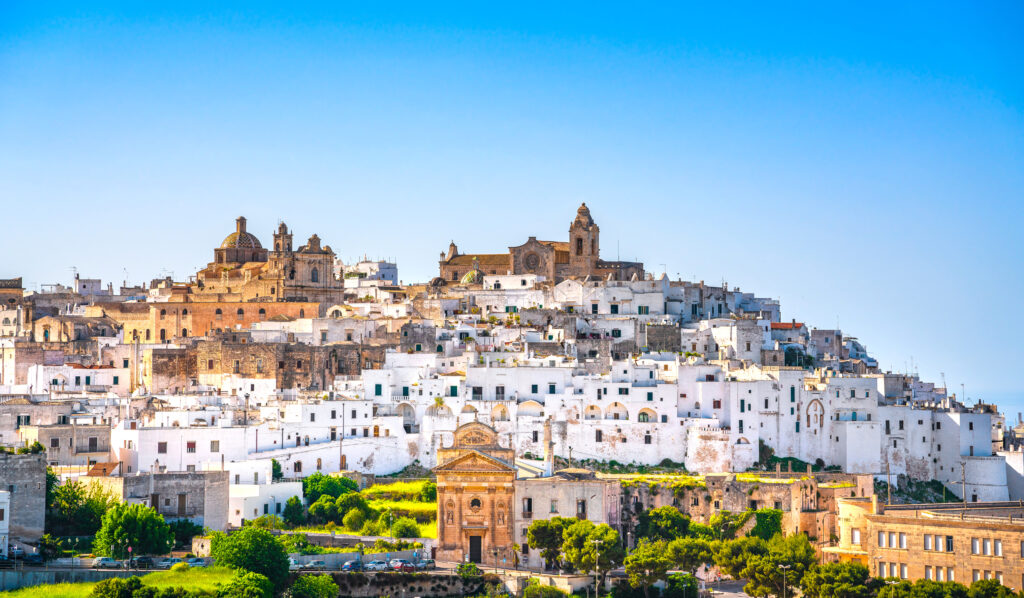
BARI
Entering the maze of alleys and it seems that little has changed in the city of Bari. In the doorways are the women who prepare the famous orecchiette. Using just pastry boards, and armed with water, semolina and knives. The houses are leaning against each other and at every corner there are churches, monuments and glimpses of the sea.
From the basilica of St. Nicola, to the planetarium, from the Petruzzelli Theater, to the Fiera del Levante, Bari is a city full of life. The ancient heart of the city beats in Bari Vecchia, or “old Bari,” a maze of winding streets. The Basilica of San Nicola is the first destination to reach in the heart of the old city of Bari. Symbol of Apulian-Romanesque architecture, it houses the relics of San Nicola, brought by sixty-two sailors from Bari in 1087.
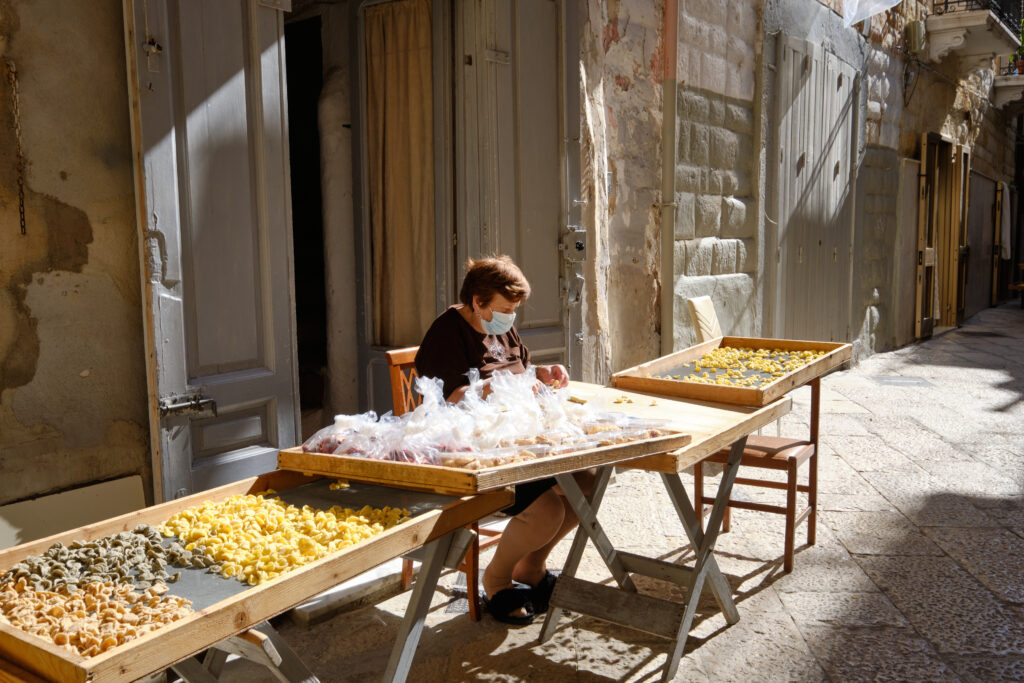
CISTERNINO
The beautiful village of Cisternino rises in the heart of the splendid Valle d’Itria. It is a magical place, characterized by an extremely relaxing atmosphere. It is the preferred choice of most Italians for their summer holidays.
All who visit recognize the beauty of this village. It is one of the most beautiful places in the entire region of Puglia. Like the other boroughs mentioned above, Cisternino deserves your visit, if only for a day trip from other more bustling cities like Lecce and Bari.
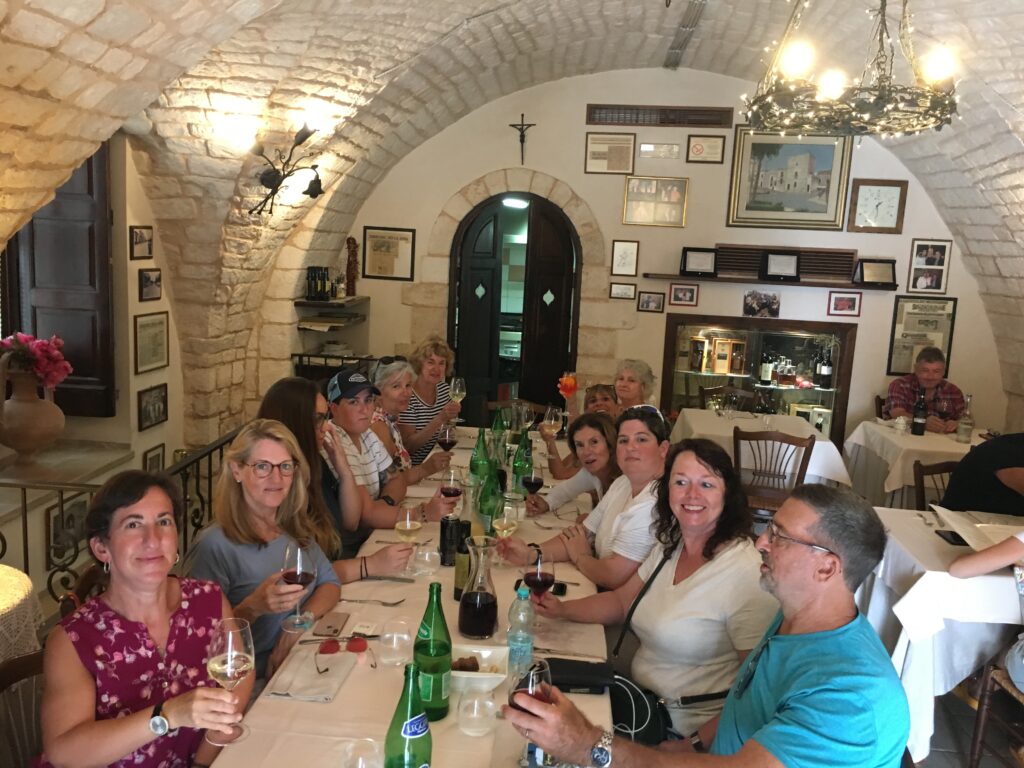
What do all these beautiful destinations have in common? They are part of our upcoming culinary and culture tour of Puglia! Unfortunately, we’re all booked for this year but returning in 2024. Please join us! Find all the info on next year’s trip by clicking here.
Leave a Reply

What to Pack for Italy
Cosa Mettere in Valigia per l'Italia
Everyone is always asking me what they should pack for Italy,
so I’ve created a quick reference guide that you can use for your next trip.
Hint: You don’t need nearly as much as you think you do!

4 Comments
How large are your groups?
Hi Adele, max group size is 16 participants. Hope you can join us!
Can a person come as a single
Yes! There is a single supplement for use of double room, but you most certainly can come solo!